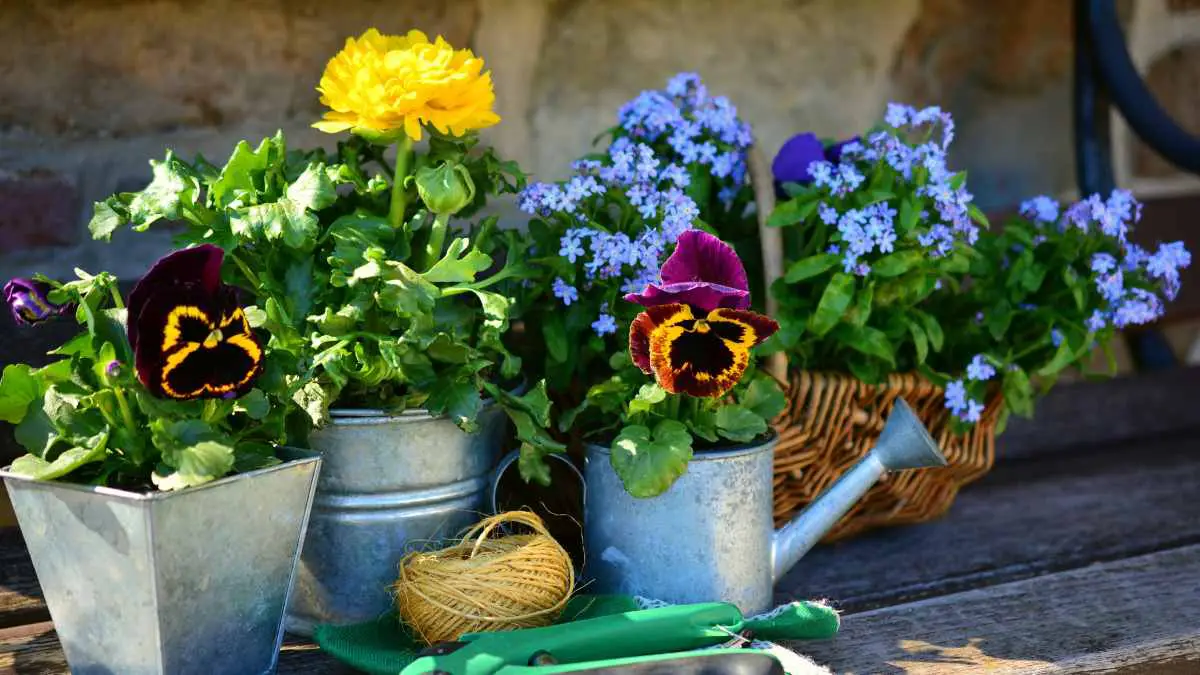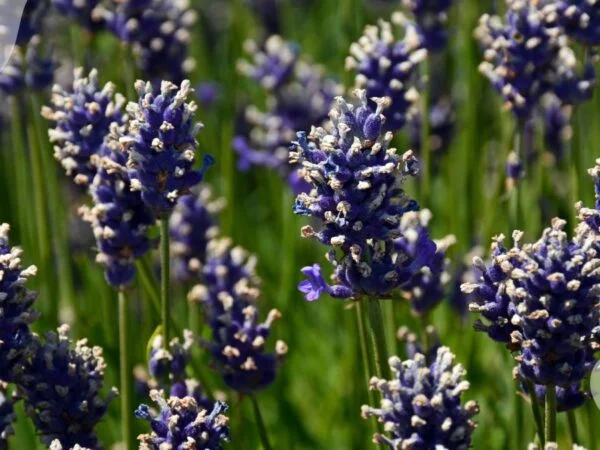Exploring the vast world of flora, understanding the contrasting characteristics of various types of flowers and plants is a captivating journey. From the delicate petals of roses to the sturdy stems of succulents, each plant type showcases unique features that cater to different tastes and environments. Whether you prefer the vibrant hues of tulips or the subtle elegance of orchids, there's a botanical wonder for every preference. Dive into this guide to uncover the diverse array of flowers and plants, discovering how they thrive in various climates and conditions. Embrace the beauty and diversity that nature offers through these fascinating specimens.
Key Takeaways
- Diversify Your Garden: Incorporate a variety of flower types to add color and interest to your garden.
- Learn Flower Categories: Understand the different categories of flowers to better plan your garden layout and care.
- Consider Popular US Flowers: Include popular US flowers like roses and tulips for a classic and timeless garden aesthetic.
- Adapt to Unique Growing Conditions: Explore flowers that thrive in specific conditions to make the most of your garden's environment.
- Discover Lesser-Known Flowers: Delve into lesser-known flowers to introduce unique and intriguing blooms to your garden.
- Personalize with Special Flower types: Experiment with special flower types to create a garden that reflects your personality and style.
- Choose Garden Favorites Wisely: Select your garden favorites based on your preferences and the suitability of the plants to your local climate and soil.
Flower Diversity Overview
Popular Types
When it comes to popular types of flower plants, roses, tulips, and daisies top the list globally. These flowers are loved for their beauty and versatility. Roses symbolize love, while tulips represent elegance and grace.
- Roses: Known for their variety of colors and fragrances.
- Tulips: Available in a wide range of colors and shapes.
- Daisies: Loved for their simplicity and cheerful appearance.
For beginner gardeners, these flowers are ideal due to their ease of cultivation and adaptability to different climates. Their widespread availability in nurseries makes them accessible choices for those new to gardening.
Unique Varieties
Exploring unique varieties introduces you to a world beyond the ordinary. From the Bird of Paradise with its striking resemblance to a bird in flight to the delicate Bleeding Heart, each unique variety has its charm. These plants add an element of surprise and intrigue to any garden.
- Bird of Paradise: Known for its vibrant colors and distinctive shape.
- Bleeding Heart: Recognized for its heart-shaped flowers that appear to "bleed."
These rare and exotic varieties often require specific care due to their distinct needs. However, the reward is witnessing these extraordinary blooms flourish in your garden, making them worth the effort.
Colorful Blooms
In gardens, colorful blooms create a visual feast that captivates onlookers. Each color carries symbolism; red signifies passion, yellow represents friendship, while white symbolizes purity. Understanding these meanings adds depth to the language of flowers.
- Red Flowers: Symbolize love, desire, and courage.
- Yellow Flowers: Represent joy, happiness, and positive energy.
- White Flowers: Signify purity, innocence, and spirituality.
The emotional impact of flower colors is profound; they can evoke feelings of happiness, nostalgia, or tranquility. By selecting a diverse range of colors for your garden, you can create a space that resonates with various emotions.
Understanding Flower Categories
By Life Cycle
Flower plants vary in their life cycles, with two main categories being annuals and perennials. Annuals complete their life cycle in one growing season, while perennials regrow each year. These differences influence how they are planted and cared for.
Understanding the differences between annuals and perennials is crucial for gardeners. Annual flowers need to be replanted every year as they complete their life cycle in one season. On the other hand, perennials return each year, making them a more sustainable choice for long-term gardening.
The varied life cycles of flower plants impact gardening practices significantly. Gardeners must consider factors like planting times, maintenance needs, and overall garden design when choosing between annuals and perennials. This knowledge helps create thriving, beautiful gardens throughout the seasons.
By Significance
Flowers hold symbolic meanings that vary across cultures and traditions. Different flower plants are associated with emotions, events, and qualities. For example, the rose symbolizes love and romance, while the lily represents purity and renewal.
Exploring the cultural significance of flowers reveals how they have been used in ceremonies, rituals, and everyday life throughout history. Flowers like the lotus have deep spiritual meanings in Eastern cultures, symbolizing enlightenment and rebirth.
Historical events have played a role in shaping the significance of certain flowers. For instance, during World War I, red poppies became a symbol of remembrance for fallen soldiers due to their prevalence on battlefields. Understanding these connections adds depth to our appreciation of flowers' meanings.
Popular US Flowers
Roses to Daisies
Roses and daisies are beloved for their beauty, but they differ in size and color. Roses come in various hues like red, pink, and white, while daisies typically bloom in white or yellow. Roses are known for their fragrant scent, whereas daisies have a more subtle smell.
Taking care of roses requires regular watering and pruning to promote healthy growth. On the other hand, daisies are hardy flowers that can thrive in various conditions with minimal maintenance. Roses need full sun exposure, while daisies can tolerate partial shade.
In terms of symbolism, roses often represent love and romance across different cultures. Daisies, on the other hand, symbolize innocence and purity. Roses are commonly used in weddings and romantic occasions, while daisies are popular in bouquets for their cheerful appearance.
Sunflowers to Lilies
Sunflowers stand out for their vibrant yellow petals and large size compared to the elegant and fragrant lilies. Sunflowers are known for their ability to track the sun's movement throughout the day, a phenomenon called heliotropism. Lilies come in various colors like white, pink, and orange, each symbolizing different meanings such as purity or passion.
For optimal growth, sunflowers require full sunlight and well-drained soil. They are also drought-tolerant plants that thrive in hot climates. Lilies prefer moist soil and partial shade to protect them from excessive heat during summer months.
Sunflowers have versatile uses beyond aesthetics; their seeds provide a source of oil and food products. In contrast, lilies are commonly used in floral arrangements for weddings and funerals due to their elegant appearance and symbolic meanings related to life and death.
Unique Growing Conditions
Sun and Shade
When it comes to sun and shade, certain flower plants excel in varying light conditions. Some, like roses and marigolds, bask in the sun's warmth, while others, such as hostas and ferns, prefer the cool embrace of shade.
Understanding the importance of sunlight exposure is crucial for maintaining a healthy garden. Sun-loving plants need at least six hours of direct sunlight daily, promoting robust growth and vibrant blooms. On the other hand, shade-loving plants thrive in filtered or indirect light, protecting them from scorching heat.
Creating a balanced garden involves strategically placing sun-loving and shade-loving plants to ensure each species receives its preferred light conditions. This harmony not only enhances the visual appeal of your garden but also promotes optimal growth for all plant varieties.
Soil Types
In gardening, different soil types play a vital role in determining which flower plants will thrive in your garden. Some flowers, like lavender and succulents, flourish in well-draining sandy soils, while others, such as hydrangeas and azaleas, prefer moisture-retentive loamy soils.
l pH levels significantly impact plant growth, with some flowers thriving in acidic soils (e.g., azaleas) while others prefer alkaline conditions (e.g., lilacs). Understanding your soil's pH can help you select the right flower varieties for your garden.
Amending soil to suit specific flower plant needs involves adjusting pH levels through additives like lime or sulfur. Incorporating organic matter such as compost can improve soil structure and fertility, providing an ideal growing environment for a wide range of flower plants.
Exploring Lesser-Known Flowers
Amaranthus to Astilbe
Amaranthus, known for its vibrant and cascading blooms, adds a pop of color to any garden. Its long, draping stems make it perfect for arrangements or as a standalone feature. With ideal conditions of full sun and well-drained soil, Amaranthus thrives in warm climates.
Astilbe, on the other hand, is prized for its feathery plumes of flowers that come in various shades like pink, white, and red. Thriving in moist soil and partial shade, Astilbe is a great choice for shady spots in the garden. Its elegant appearance makes it a favorite for adding texture and dimension to flower beds.
- Pros:
- Vibrant colors
- Versatile for arrangements
- Thrives in warm climates
- Cons:
- Requires full sun
- Needs well-drained soil
- May not tolerate cold temperatures well
Exotic Picks
Delve into the world of exotic flower plants where rare gems await discovery. From the elusive Ghost Orchid to the striking Black Bat Flower, exotic plants captivate with their unique shapes and colors. These plants often require specialized care due to their specific environmental needs.
Cultivating exotic flowers can be a rewarding challenge for avid gardeners. Providing the right balance of sunlight, water, and nutrients is crucial for their growth. In regions with varying climates, it's essential to create microclimates to mimic their natural habitats.
- Key Information:
- Ghost Orchid: Native to Florida Everglades
- Black Bat Flower: Originates from Southeast Asia
- Rare shapes and colors add intrigue to gardens
- Steps:
- Research specific care requirements
- Mimic natural environments indoors if needed
- Monitor closely for signs of stress or disease
Special Flower Types
Most Beautiful
Bold your favorite flowers and include them in your garden for a stunning visual display.
Delight in the vibrant hues of roses, orchids, and tulips as they bloom gracefully.
Witness the enchanting beauty of peonies, lilies, and hydrangeas adorning your outdoor space.
Enhance your garden with the captivating allure of sunflowers, dahlias, and hibiscus blossoms.
Create a harmonious blend of colors and textures by planting a variety of these exquisite flowers.
Garden Favorites Guide
Annuals and Perennials
Annuals and perennials are the staples of any garden, each with unique characteristics. Annuals bloom quickly, lasting for one growing season, while perennials return year after year.
- Annuals offer a burst of color and are perfect for filling in gaps in a garden. However, they require replanting each year.
- On the other hand, perennials establish strong root systems and can endure harsh conditions but may have shorter blooming periods.
Creating a balanced garden involves strategically combining annuals for instant color with perennials for long-term structure. By doing so, you ensure continuous blooms throughout the seasons.
Easy-Care Choices
For busy individuals, opting for easy-care flower plants is essential. These varieties require minimal effort but still provide beauty to your garden space.
- Look into options like marigolds, known for their vibrant hues and ability to thrive in various conditions.
- Consider planting zinnias, which are not only colorful but also attract butterflies and hummingbirds to your garden.
Caring for these low-maintenance flowers involves regular watering, occasional fertilizing, and deadheading spent blooms to encourage continuous flowering.
Rare and Unique Finds
Rarest Blooms
In the world of floral plants, some species stand out for their rarity and exclusivity. These unique blooms are often hard to find, making them treasures for avid gardeners. Conservation efforts play a crucial role in protecting these rare flower plants from extinction. By preserving their natural habitats and raising awareness, we can ensure the survival of these precious botanical wonders. The beauty of these elusive blooms lies in their exquisite features and the sense of wonder they evoke.
Unique Colors
Flower plants with uncommon colors add a touch of intrigue to any garden. From deep blues to vibrant purples, these unique hues captivate the eye and spark curiosity. Each color carries its symbolism and meaning, enriching the visual language of flowers. Incorporating flowers with distinctive colors into your garden palette can create stunning visual contrasts and enhance the overall aesthetic appeal. Experimenting with unusual color combinations can result in breathtaking displays that leave a lasting impression on visitors.
Summary
You've now explored a vast array of flower types, from popular favorites to rare finds. Understanding the diversity of flowers can enrich your gardening experience and help you appreciate the uniqueness each plant brings. By delving into different categories and exploring various growing conditions, you can expand your garden with both familiar and lesser-known blooms.
As you continue your journey in the world of flowers, consider incorporating some of these special and rare finds into your garden. Experiment with new varieties, challenge yourself with unique growing conditions, and discover the beauty that each flower type has to offer. Embrace the diversity of nature and let your garden flourish with a vibrant tapestry of colors and shapes.
Frequently Asked Questions
What are the different categories of flowers?
Flowers are categorized based on factors like structure, lifespan, and purpose. Common categories include annuals, perennials, biennials, and bulbs.
Which popular flowers thrive well in the US climate?
Popular flowers in the US include roses, tulips, sunflowers, daisies, and lilies. These flowers are well-suited to various regions across the country.
What unique growing conditions do certain flowers require?
e flowers like orchids and succulents require specific conditions such as humidity levels or minimal watering due to their unique structures.
Can you suggest some lesser-known flower varieties worth exploring?
Consider exploring flowers like celosia, eryngium, anemone, or heliotrope for a unique addition to your garden that stands out from common choices.
What special types of flowers can be grown in gardens?
Special flower types like heirloom varieties, native wildflowers, or exotic imports can add diversity and interest to your garden space beyond traditional options.
How can beginners identify their favorite types of garden flowers?
Beginners can start by researching easy-to-grow options like marigolds or zinnias and gradually explore different types based on personal preferences and gardening goals.
Image Source: Paid image from CANVA




